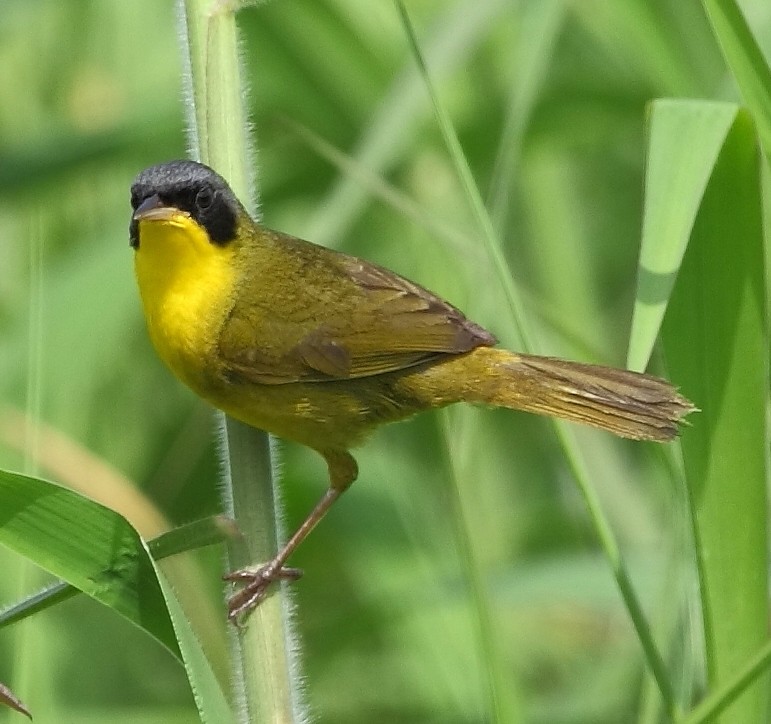Masked Yellowthroat
A species of Yellowthroats Scientific name : Geothlypis aequinoctialis Genus : Yellowthroats
Masked Yellowthroat, A species of Yellowthroats
Botanical name: Geothlypis aequinoctialis
Genus: Yellowthroats
Content
Description General Info
 Photo By Hector Bottai , used under CC-BY-SA-3.0 /Cropped and compressed from original
Photo By Hector Bottai , used under CC-BY-SA-3.0 /Cropped and compressed from original Description
The masked yellowthroat (Geothlypis aequinoctialis) is a New World warbler. It has a number of separate resident breeding populations in Central and South America, some of which may be considered to form separate species. The breeding habitat is marshes and other wet areas with dense low vegetation. The masked yellowthroat may also be found in other areas with dense shrub, but is less common in drier habitats. Two white eggs with reddish-brown markings are laid in a lined cup nest low in grass or rank vegetation. The masked yellowthroat is 13.2 cm long and weighs 13 g. It has yellow-green upperparts, bright yellow underparts, and a mainly black bill. The adult male has a black facemask, bordered above with a gray band. The female is similar, but lacks the black mask. She is slightly duller, has variable amounts of gray to the head (often virtually none), a yellowish eye ring and a yellowish stripe from the bill to the eye. There are significant racial variations in the male plumage (see Taxonomy). This species is easily distinguished from wintering common yellowthroat by its uniform yellow underparts, whereas the North American bird has a white belly. The masked yellowthroat is usually seen in pairs, and does not associate with other species. It is often skulking, but may pop up occasionally, especially to sing. It feeds on insects, including caterpillars, which are usually captured in dense vegetation. The call is a fast chattering, quite unlike that of other yellowthroat species, and a more typical sharp chip. This species may be spreading in Central America due to deforestation. 
Size
14 cm
Nest Placement
Shrub
Habitat
The masked Yellowthroat is commonly found in moist environments, particularly favoring damp grasslands, marshy thickets, and seasonally flooded savannas. It has an affinity for dense vegetation, such as undergrowth near forest edges, clearings, and along riverbanks, often in ecosystems featuring colonizer plants like Cecropia trees. Additionally, masked Yellowthroat adapts well to human-altered landscapes, including agricultural zones like sugar cane fields, oil palm plantations, and man-made wetlands, indicating its versatile habitat preferences.
Dite type
Insectivorous
General Info
Feeding Habits
Bird food type
Species Status
Not globally threatened.
Scientific Classification
Phylum
Chordates Class
Birds Order
Perching birds Family
New world warblers Genus
Yellowthroats Species
Masked Yellowthroat